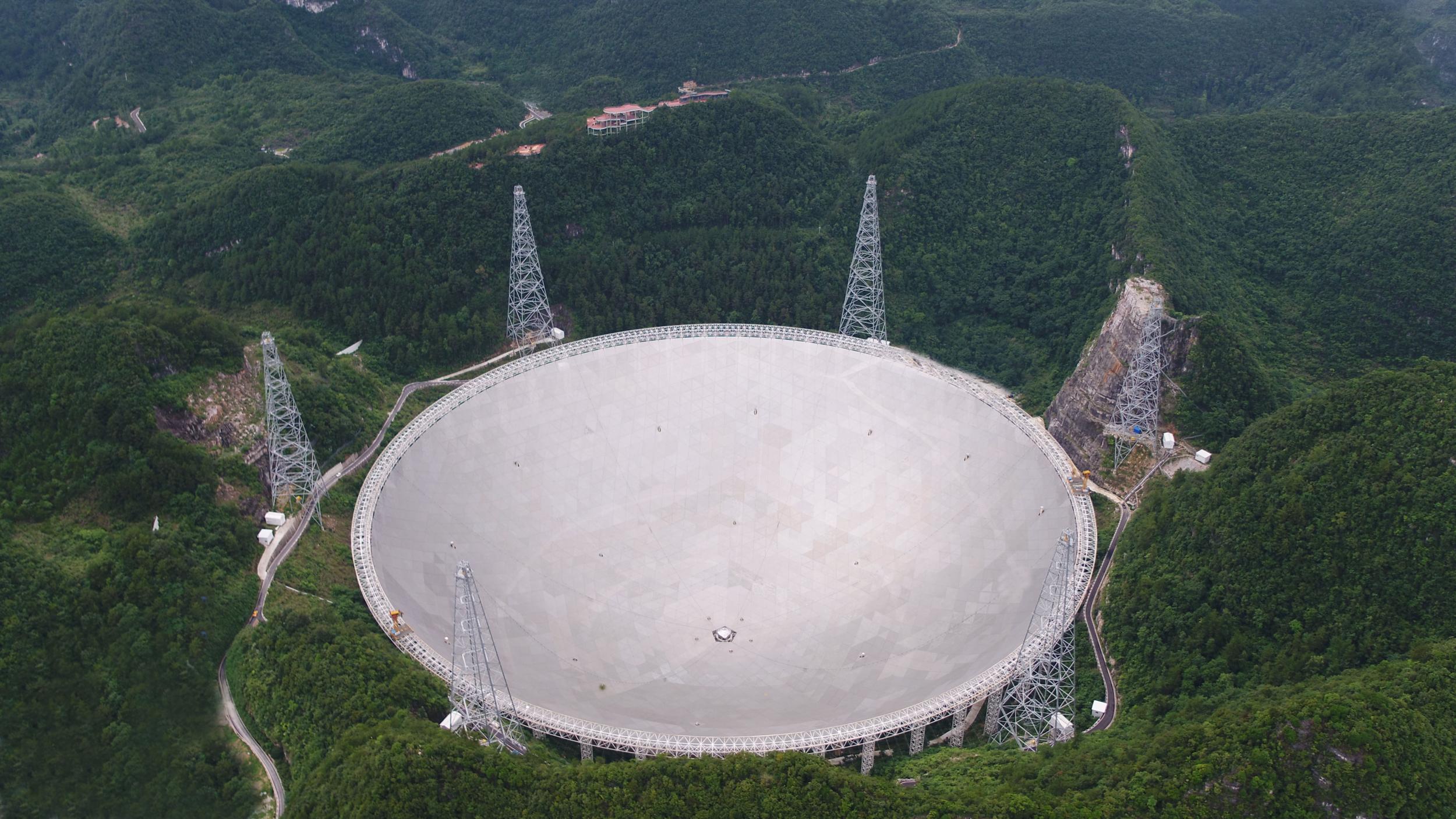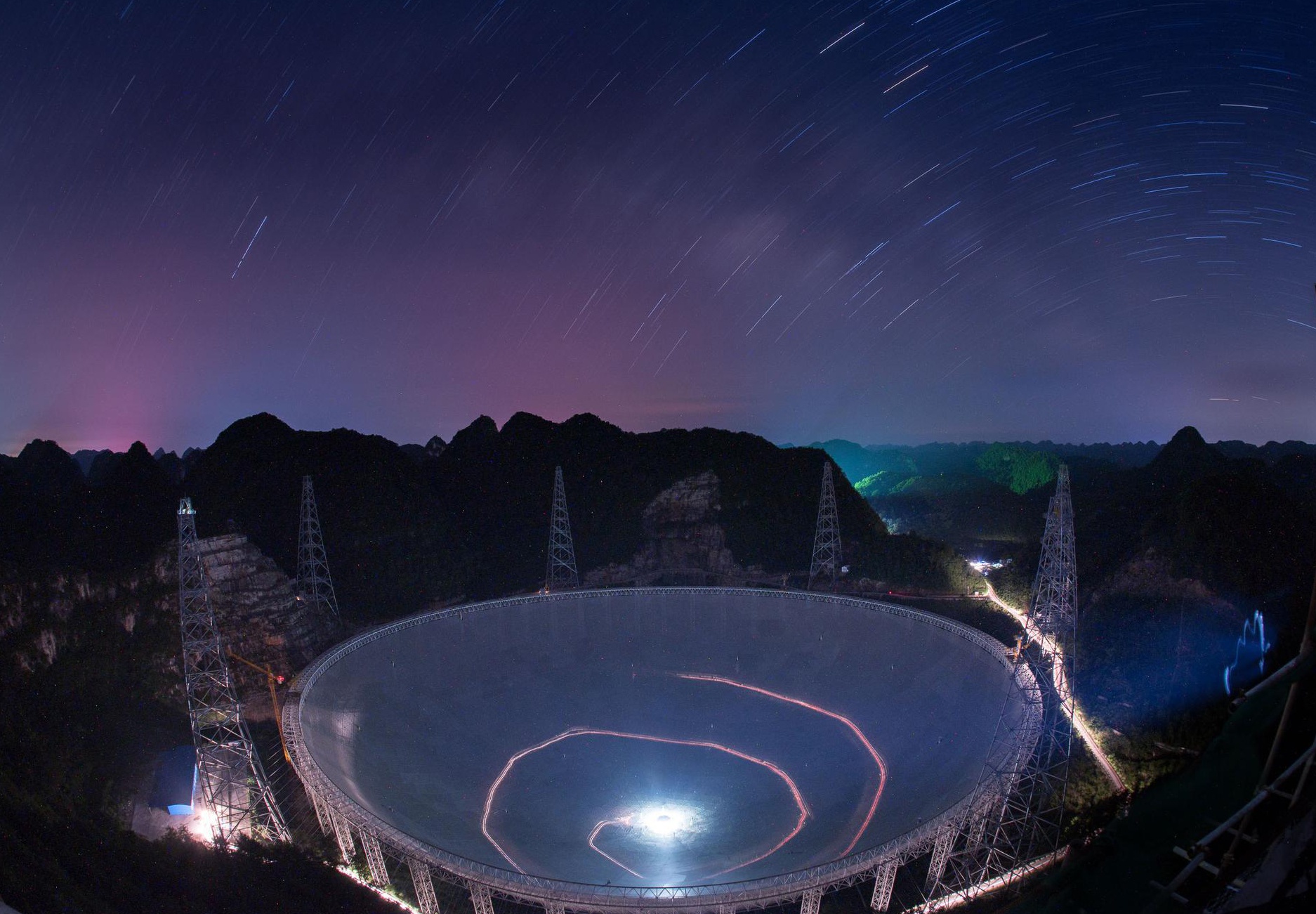



Five-hundred-meter Aperture Spherical Telescope (FAST)
Located in Pingtang County, Guizhou Province, China, FAST is the world's largest single-dish radio telescope, with a diameter of 500 meters. Officially operational since January 11, 2020, FAST has significantly advanced astronomical research, including the discovery of over 300 pulsars. The telescope is renowned for its high sensitivity and has become a pivotal instrument in the search for extraterrestrial intelligence and the study of cosmic phenomena.
Information
Ticket price
Time
Location
Pingtang County, Qiannan Buyi and Miao Autonomous Prefecture, Guizhou, China
View maps
More about the trip
Five-hundred-meter Aperture Spherical Telescope (FAST): China's "Sky Eye"
Located in Pingtang County, Guizhou Province, China, the Five-hundred-meter Aperture Spherical Telescope (FAST), affectionately known as "China Sky Eye," is the world's largest single-dish radio telescope, with a diameter of 500 meters. Officially operational since January 11, 2020, FAST has significantly advanced astronomical research, including the discovery of over 300 pulsars. The telescope is renowned for its high sensitivity and has become a pivotal instrument in the search for extraterrestrial intelligence and the study of cosmic phenomena. It's a marvel of modern science and engineering.
What to See and Do
View the Telescope: From designated viewing platforms, you can marvel at the immense scale of the FAST dish, nestled in a natural karst depression. Its sheer size is awe-inspiring.
Pingtang International Astronomy Experience Hall: Before or after visiting the telescope, explore the nearby Astronomy Experience Hall, which provides comprehensive information about FAST, radio astronomy, and the universe through interactive exhibits, models, and multimedia presentations.
Ecological Protection Zone: The area around FAST is a radio quiet zone, meaning electronic devices are prohibited to prevent interference. This creates a unique, tranquil environment, allowing visitors to disconnect and appreciate the natural surroundings.
Learn About Astronomy: The site offers a fantastic opportunity to learn about cutting-edge astronomical research, the search for extraterrestrial life, and the mysteries of the cosmos.
Best Time to Visit
The site can be visited year-round. Clear days offer the best views of the telescope. Weekdays are generally less crowded than weekends and public holidays.
How to Get There
FAST is located in Pingtang County. You can take a bus from Guiyang to Pingtang County, and then a local bus or taxi to the FAST scenic area. Due to the radio quiet zone, private vehicles are usually not allowed directly to the viewing platform; shuttle buses are provided from the visitor center.
Travel Tips
Electronic device restrictions: All electronic devices (mobile phones, cameras, smartwatches, etc.) must be stored in lockers at the visitor center before entering the core viewing area to prevent radio interference. Bring a traditional camera if you wish to take photos.
Book tickets in advance: Especially during peak season, it's advisable to book tickets for the visitor center and shuttle bus online.
Allow ample time: Plan for at least half a day to visit both the Astronomy Experience Hall and the telescope viewing platform.





